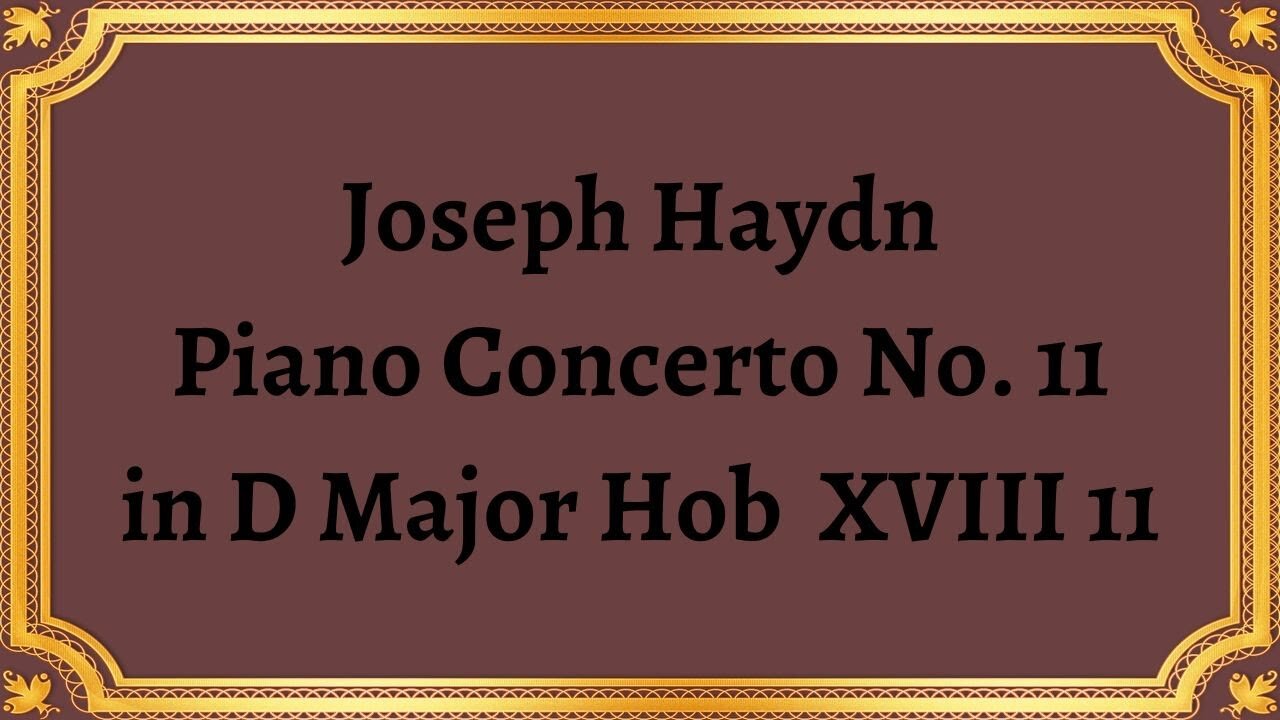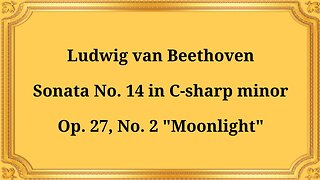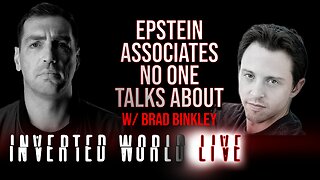Premium Only Content

Joseph Haydn Piano Concerto No. 11 in D Major Hob XVIII 11
#JosephHaydn #PianoConcertoNo11inDMajor #ClassicalMusic #MusicalComposition #BaroqueMusic #MusicTheory #Performance #KeyboardMusic #musichistory
"Joseph Haydn Piano Concerto No. 11 in D Major" is a beautiful example of the talent and artistry of the famous composer, Joseph Haydn. This piece of music is a piano concerto that was composed in 1784, during the classical period of music.
The masterpiece consists of three movements, each with its unique characteristics, and it is written for a solo piano accompanied by a chamber orchestra. The first movement, marked Vivace, opens with a bright and joyous melody, full of energy and optimism, played by the orchestra. The solo piano then enters, dancing along lightly, with playful and lively notes. The movement continues with a dialog back and forth between the piano and orchestra, with each taking turns to express themselves.
The second movement, marked Un poco adagio, is a stark contrast to the first. It is slower, more introspective music revolving around a melody in a minor key. The movement is very emotional and expressive, demonstrating Haydn’s ability to convey both melancholy and hopefulness in his music. The piano is the primary focus, with the orchestra supporting it in a more subdued role.
The third and final movement, marked Rondo Allegro, goes back to the joyful spirit of the first movement. It has a fast tempo, and the piano and orchestra play off each other in a spirited dance, showcasing their musical prowess and expressiveness. The melody is lively, and the different instruments in the orchestra take turns playing different variations of it.
Overall, "Joseph Haydn Piano Concerto No. 11 in D Major" is a beautiful masterpiece. It is the perfect representation of the composer's musical style, combining technical proficiency and excellent musicianship with emotional depth and expressive melodies. Its joyful and optimistic nature reflects the cultural and societal context of Haydn's time, where people were enjoying newfound freedom, individualism, and enlightenment. The piece is still a favorite among many pianists and classical music enthusiasts today, and it remains a testament to Haydn's enduring legacy in the world of classical music.
You have the opportunity to support the channel https://destream.net/live/RadSiarAl/donate
-
 18:26
18:26
Classical music_Music Inspiration
1 month agoLudwig van Beethoven Sonata No. 14 in C-sharp minor, Op. 27, No. 2 "Moonlight"
811 -
 31:39
31:39
Inverted World Live
8 hours agoEpstein Associates No One Talks About w/ Brad Binkley
27.6K1 -
 LIVE
LIVE
Man in America
6 hours agoExposing the MedBed PSYOP w/ Jonathan Otto
1,193 watching -
 2:05:43
2:05:43
TimcastIRL
3 hours agoTrump DEPLOYS NUCLEAR Submarines Amid Threats By Russia, SABER RATTLING Escalates | Timcast IRL
133K89 -
 2:20:51
2:20:51
TheSaltyCracker
3 hours agoTime To Arrest Hillary ReEEeStream 8-01-25
51.4K137 -
 LIVE
LIVE
SynthTrax & DJ Cheezus Livestreams
13 hours agoFriday Night Synthwave 80s 90s Electronica and more DJ MIX Livestream Variety Visuals / Variety Tracks Edition
304 watching -
 1:46:59
1:46:59
Glenn Greenwald
7 hours agoNew Russiagate Disclosures Show Depths of CIA & FBI Guilt; Trump Forcing Universities to Adopt DEI Programs Only for Jewish Students; The "Pogrom" at FSU | SYSTEM UPDATE #496
65.1K48 -
 LIVE
LIVE
FusedAegisTV
22 hours agoOFFICIAL Evo 2025 Day 1 Co-Stream - Las Vegas, NV ∥ 17 TOURNAMENTS!!
275 watching -
 2:10:07
2:10:07
The Illusion of Consensus
3 hours agoDEBATE: Alex Berenson vs Dave Smith on Holocaust, Israel/Gaza
31.5K8 -
 8:07
8:07
MattMorseTV
1 day ago $10.77 earnedTrump just LOWERED PRICES by 75 PERCENT.
62.8K101